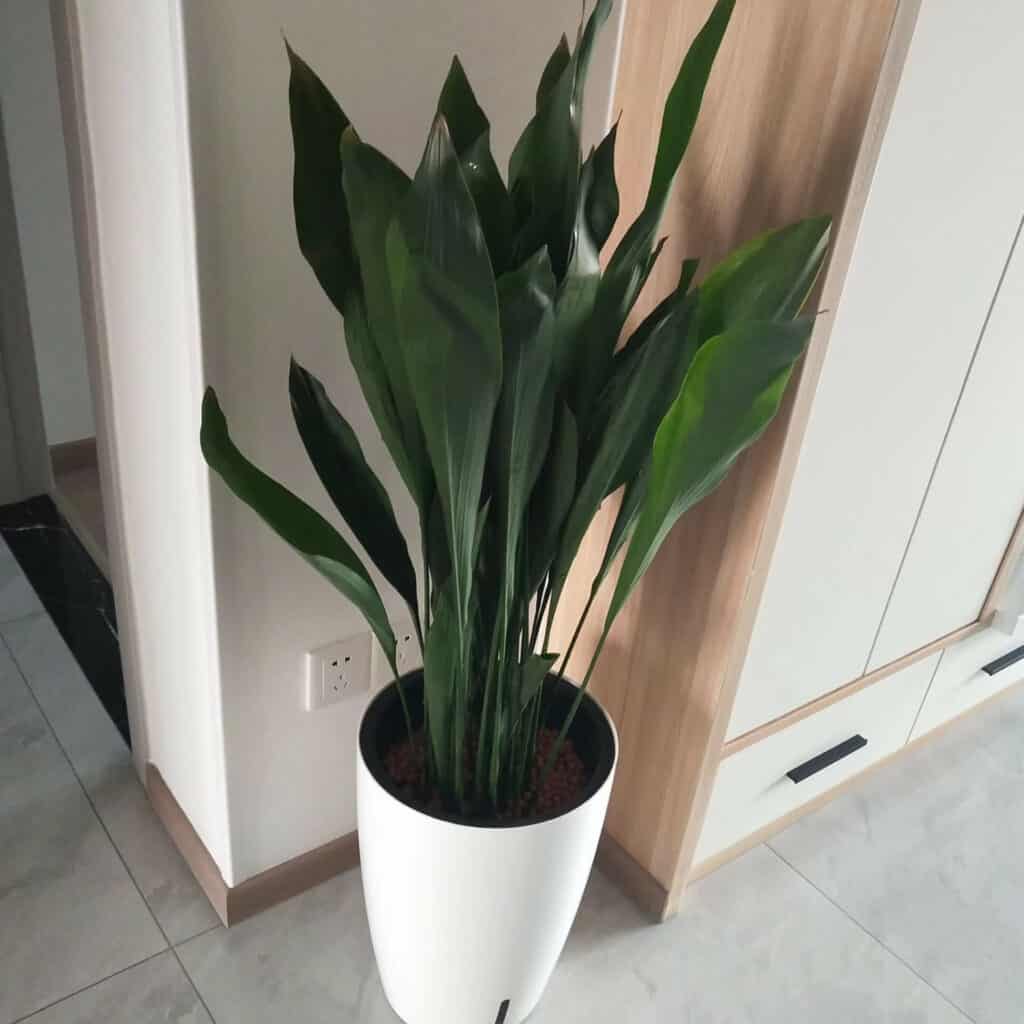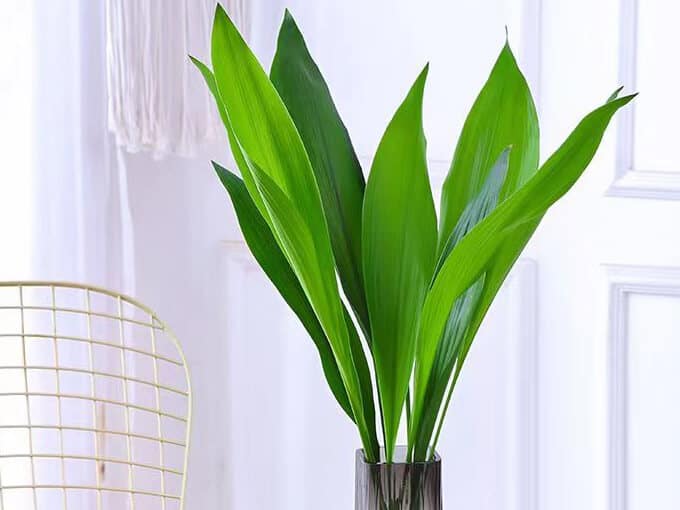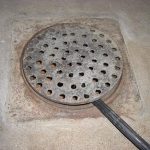If you’re looking for common garden plants that increase the beauty of your garden, then you’re at the right place. The plant we’re going to be discussing is known as Aspidistra Elatior.
Famous for its green color, Aspidistra Elatior is known as the Bar-room plant. This houseplant is a very efficient and easy-growing plant requiring much less effort.
This plant originated in Japan. The average height of an Aspidistra Elatior is around 60cm. If you’re planning on growing it, you must investigate some requirements that need to be fulfilled.

Aspidistra Elatior Care
Sunlight
It may sound a bit disappointing, but Aspidistra Elatior isn’t fond of sunlight. If you’re planning to keep this plant in your house, then you must find a place where it doesn’t receive direct sunlight, as direct sunlight destroys this plant. By destroying, I mean to say that the direct heat of the sun completely burns down the leaves of your plant, eliminating all your plant’s beauty. However, if you’re planting it inside your house in a pot or other container, you must keep it near a window to receive the necessary sunlight. Sometimes many plant owners forget to give their plants the required sunlight. This slows the growth period of the plant, which is not healthy for your plant.
Soil
Aspidistra Elatior prefers soil that has good drainage. Drainage is an important aspect in the growth of this plant, as good drainage leads to better growth. If someone chooses a soil that isn’t good at draining water, then their Aspidistra Elatior won’t be able to live for long, as the excess water in the roots and on the soil’s surface will lead to root rot, which is the death of every plant. Although there isn’t a perfect soil for plants, the best type of soil that you can use for your Aspidistra Elatior is a mixture of sand, loam, and clay. This mixture is great for plants grown outside.
Water
One surprising fact about Aspidistra Elatior is that they have some drought tolerance. This means they can survive on the toughest days when water is scarce. This does not mean that one forgets to water their plant. Aspidistra Elatior likes moist soil; hence it is advisable to keep watering the plant. The best way to water this plant is that you keep a check on the days you water it. If you feel like the plant is drying up a bit, you should water it; otherwise, if it’s moist, there is no need to water it. Over-watering has a lot of drawbacks. First, it stops the air from reaching the roots. Second, it leads to root rot, the most dangerous disease any plant can have.
Temperature and Humidity
Aspidistra Elator’s like temperatures are between 20-35 degree centigrade. This temperature range is crucial for this plant’s growth, as if the temperature drops below or increases from this range, your plant may face some problems. If you’re growing your plant in a cold environment, then make sure to bring your plant indoors at night to avoid any repercussions. Moreover, it would be better to keep your plant indoors during winter so it doesn’t catch frostbite. Talking about humidity, Aspidistra Elators like it a little moist; however, it isn’t that essential for your plant’s growth.
Fertilizer
Like all plants, a treat for Aspidistra Elator in the shape of fertilizer would turn out to be quite beneficial for the plant. The best time to give your plant fertilizer is from the start of spring to mid of summer. During this period, the plant thrives at the fastest rate. You should only apply fertilizer after watering. The best kind of fertilizer for your Aspidistra Elator is the all-purpose fertilizer, as it provides your plant with all the essentials.
Propagation
Aspidistra Elator can be propagated using the division method. This method is proven to be the best as it not only gives you a new plant but also kills off the idea of overpopulation amongst plants. In this process, you’ll have to take a piece of rhizome and two leaves. Then you’ll have to pot these in a new pot or container. The soil should be kept moist so that your plant may feel safe. Afterward, you’ll have to wait until a new Aspidistra Elator arrives.
Pests Diseases and Plant Diseases
An interesting fact about Aspidistra Elator is that this plant isn’t the favorite of several pests. However, your plant may be affected by mites and other small pests. One shouldn’t worry about such pests as they can easily be removed by spraying water or medicine.
There aren’t any plant problems that this plant faces. However, over-watering leads to root rot, which can be cured by monitoring your water cycle.




